InDesigner: The Herbfarm
 This article appeared in Issue 138 of InDesign Magazine.
This article appeared in Issue 138 of InDesign Magazine.How Ron Zimmerman parlayed a one-man typesetting business into the restaurant of his dreams
Sometimes the love of design and layout show up in the least likely of places. Consider The Herbfarm, a AAA 5-Diamond restaurant focusing on regional foods from local sources around the Pacific Northwest. Ron Zimmerman and wife and business partner Carrie Van Dyck opened The Herbfarm in 1986, and today it has grown to include a one-and-a-half-acre on-site garden, a five-acre off-site farm, and an enviable reputation around the world. (The few meals I’ve eaten at The Herbfarm with my wife have been among the most special of my life.)
But The Herbfarm has a secret side, too: Zimmerman’s decades-long experience in the worlds of design and typesetting. During the past couple of years, we’ve corresponded about his background and current working setup in this “other world.” The following sections share Ron’s memories and insights in his own words, quoted from our correspondence.
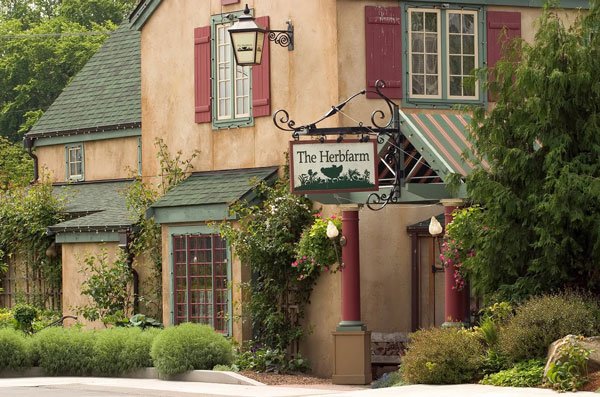
The Herbfarm restaurant, in Woodinville, Washington, USA

Herbfarm interior
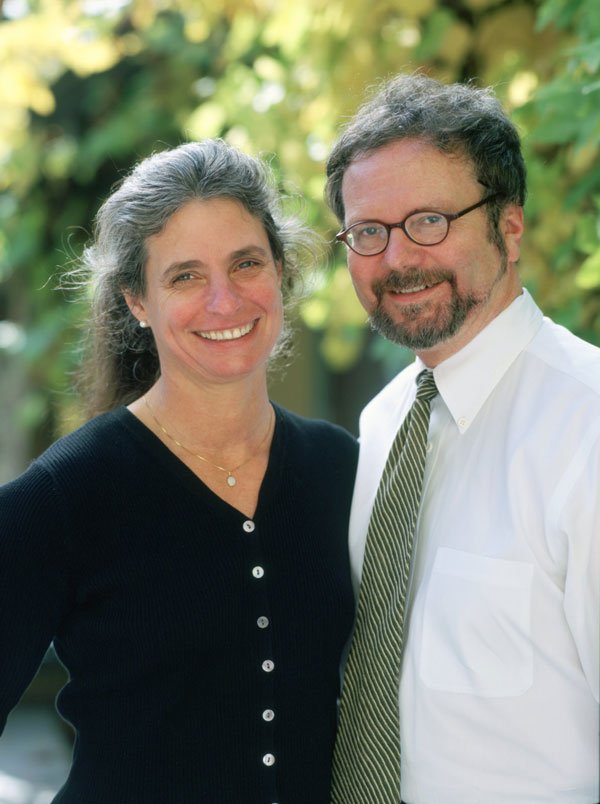
Owners Ron and Carrie
Ancient History
Years ago and just out of college, I was a destitute young man (essentially an indentured servant) who traded cooking and gardening for a no-bathroom, 120-square-foot loft in a stand-alone garage, 50 blocks north of my alma mater, the University of Washington. The day that I found 35¢ on the ground and could take the bus home still stands out as one of life’s more happy and fortuitous moments!
One afternoon, and still penniless, I was perusing a copy of Mother Earth News when an article caught my attention: “Make $12 an Hour with a Home Typesetting Business.” Of course, this was all before desktop computers (the University ran a building-sized computer, where code was fed in on paper punch cards), so the typesetting was to be on an IBM Selectric Composer—a machine that looked like an oversized electric typewriter but was vastly more complicated, as it could do proportionately spaced type. If you wanted to justify a column of type, you typed it twice: The first time yielded a readout bar that gave you both a color and number, such as Green 3 or Red 6. Then, to justify the type, you set the right-hand dial to Green and the number to 3 and retype the text. By manually switching type balls, you could output from 8 to 14 point text. Sweet! [Editor’s note: Check out this YouTube video to see a brief demo of the process.]
Anyway, I read the article and had the naive gumption that it might be okay to call IBM about securing such a wondrous tool. Much to my surprise, two salesmen in blue suits came calling on me in my loft, even gamely climbing the swinging, counter-weighted two-by-four ladder to meet me at my arboreal desk crammed near my bed. For whatever reason, the next thing I knew they delivered this $10,000 machine along with a thick book of perforated coupons to tear out and send in with my monthly payment. I was in the graphic arts business… and I needed clients. Fast.
Turned out, most small businesses back then needed a camera-ready paste-up to take to a printer. No one wanted just columns of type. So I bought a hardwood layout board and a T-square and learned to make brochures with type and artwork laid out in light blue pencil and all held in place with an application of beeswax. Unless you lived through that period, it is difficult to comprehend what a detailed and time-consuming venture it was to produce a catalog or other complicated print piece.
In subsequent years, the Composer and layout board followed me as I promoted B-grade rock ’n’ roll acts for a booking agency, and then started an outdoor equipment company catalog that grew into a 20-million-dollar-a-year mail-order business.
When Carrie and I conjured up the first iteration of The Herbfarm restaurant in my folks’ garage, I brought along that same layout board. At first, we used a 16-pin dot matrix printer to produce the type for the daily menu (the Composer having been sold). The menu was still pasted down with wax—edges painted with white out—then photocopied to two-color pre-printed menu blanks that we hand-folded and stapled to menu covers.
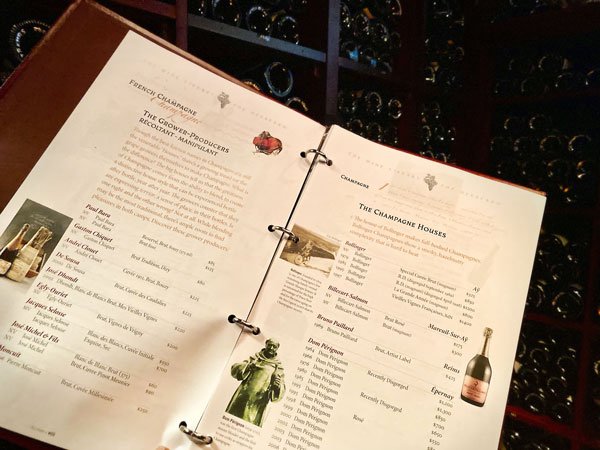
Ron builds every print piece for The Herbfarm with InDesign, including the extensive wine menu.
Going Digital
In 1987, I purchased a laser printer and started to use Aldus PageMaker 1.0 for Windows. I was actually a beta tester for the program and the guy who recommended that it would be useful if objects could be grouped.
Now that the menus no longer needed to be physically pasted up, I took my layout board home. Today that hardwood board resides in my kitchen, living out its life as a cutting board. Among the pan burns, oil stains, and indelible chop marks, you can still make out—if you look closely—the faint remains of X-ACTO blade cuts. Each one tells a story, a remembrance of times past, marks of an analog age before there was the marvel PageMaker or InDesign or the World Wide Web. So—at least for me—there is a very real link between InDesign and cooking.

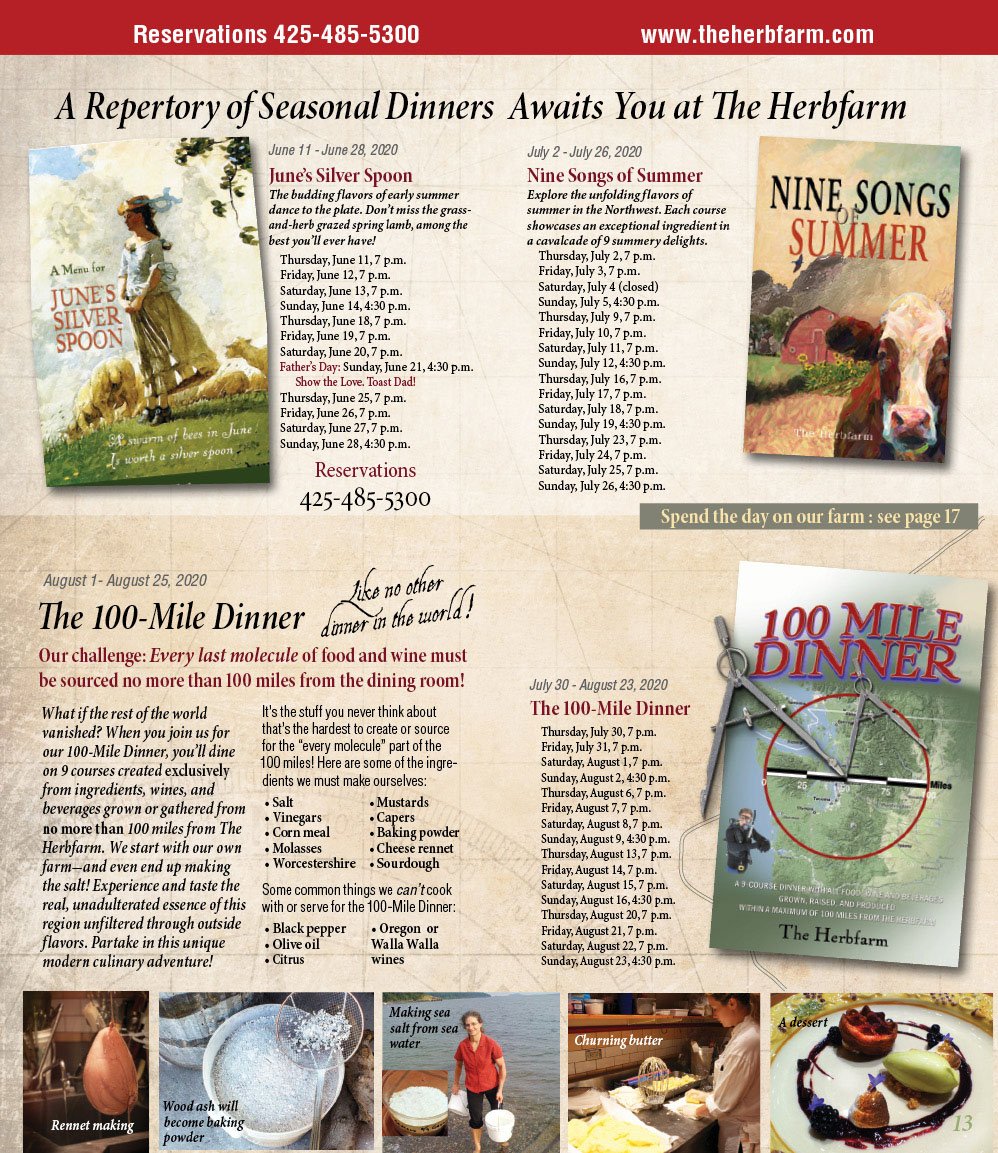
The annual 32-page Herbfarm brochure and a detail spread from the brochure, showing three of the restaurant’s special dinners
A couple decades ago I switched to InDesign. So today, anything that is text dominant and meant for print, whether in-house or press printed, is created with InDesign. This would include our annual 32-page Herbfarm brochure (I’m sure we’re the only restaurant that has a 32-page brochure!), as well as daily one-off menus (in three versions including one for guests who forget to bring their reading glasses), staff “briefing sheets,” floor maps for where guest will be seated, numerous handouts and information sheets for guests, a nightly WineTales newsletter, birthday and anniversary signs, and labels and booklets as components of take-home gifts for departing guests.
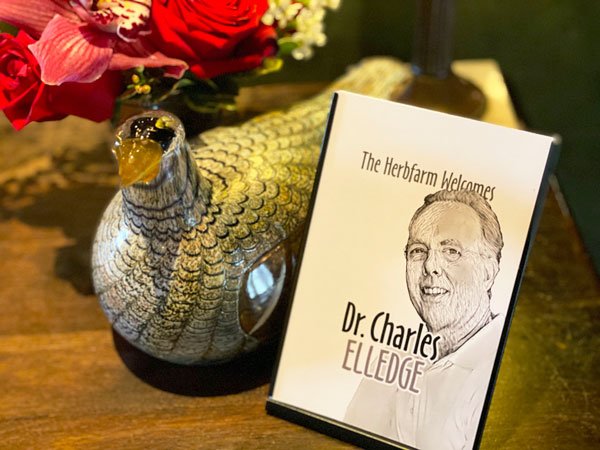
The personalized cards that greet guests celebrating special occasions often require significant time and effort to customize.

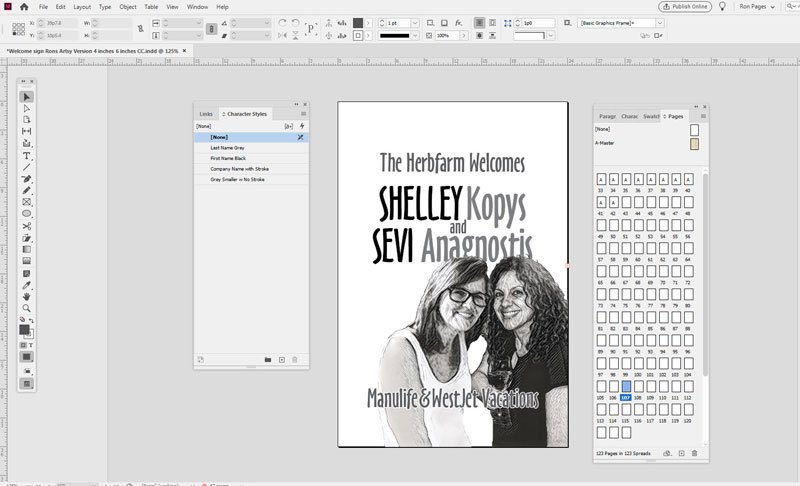
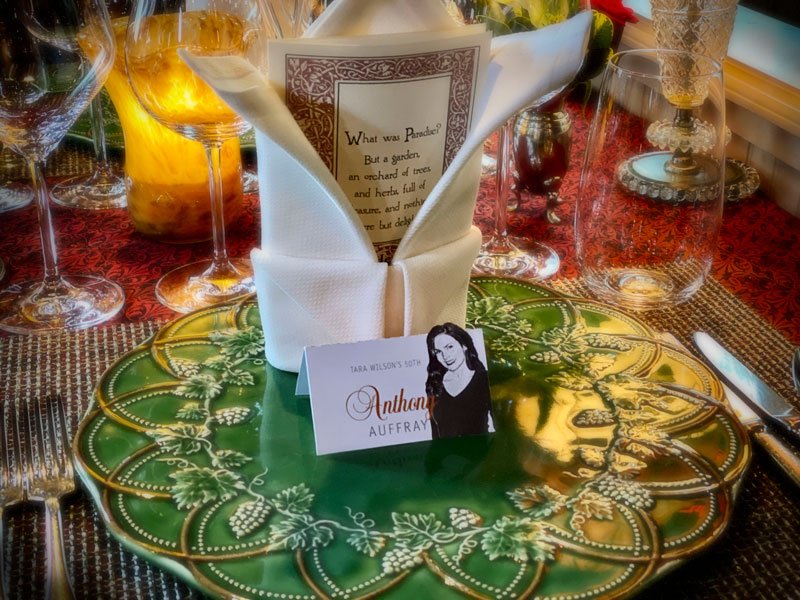
We even employ InDesign’s table feature to create the internal calendar for blocking out the schedule of our dinner themes over the course of a year.
On the CS3 version, I run XMPie, which allows me to create elaborate place-setting cards with variable text integrated into the artwork. Yes, I have to keep an old copy of CS3 running on my machine in order to use my XMPie InDesign plug-in. Another use for CS3 is that it will open legacy PageMaker files from over 20 years ago that the modern version of InDesign can’t. That is also why I can’t migrate from Windows 7 Pro to Windows 10!

The Herbfarm is located in the center of “Washington state wine country,” and its clientele care deeply not just about drinking good wine, but also learning about it. Ron builds custom educational WineTales newsletter and brochures for each meal.

Telling Stories
As I mentioned, I came from a direct marketing background, which is all about telling a compelling story—about showing people the benefits of an action or purchase. So much of the storytelling has been lost on websites these days, replaced by product specs but forgetting all of the benefits that a product confers.
A picture and a brief description may make for quick browsing. But everyone loves a great story. While a picture may be worth a thousand words, a thousand words can paint a masterpiece.
The words and images herein are Ron Zimmerman’s, as told to David Blatner, publisher of InDesign Magazine.


